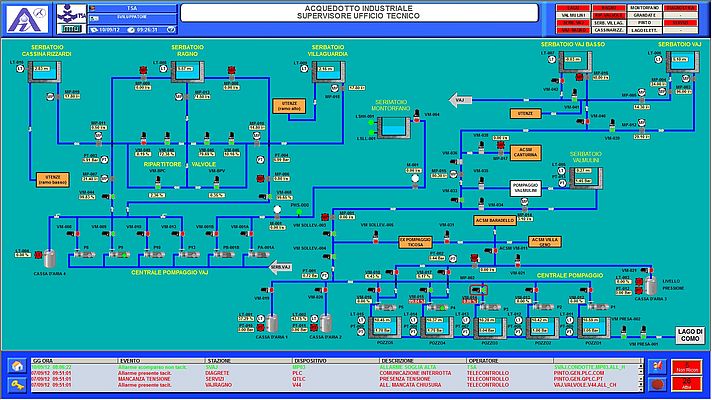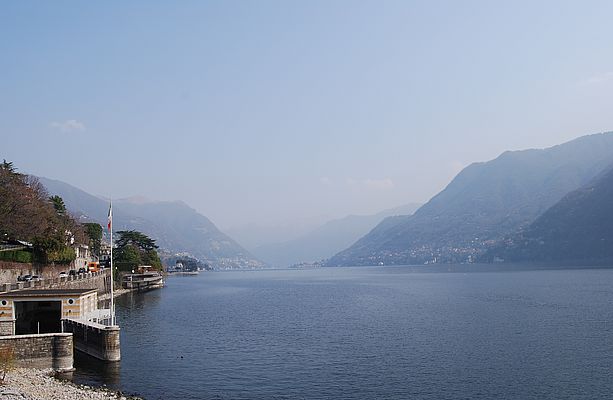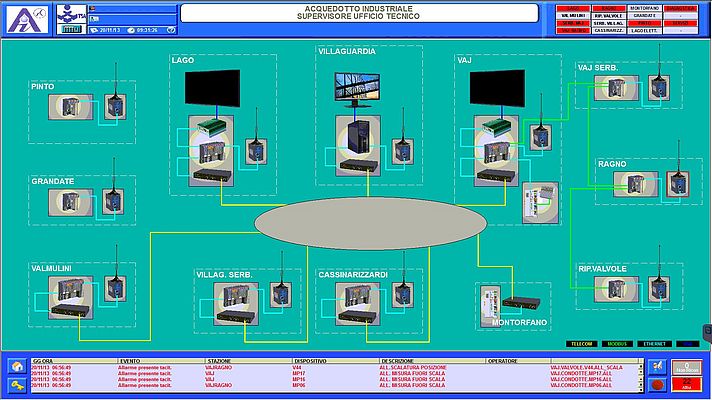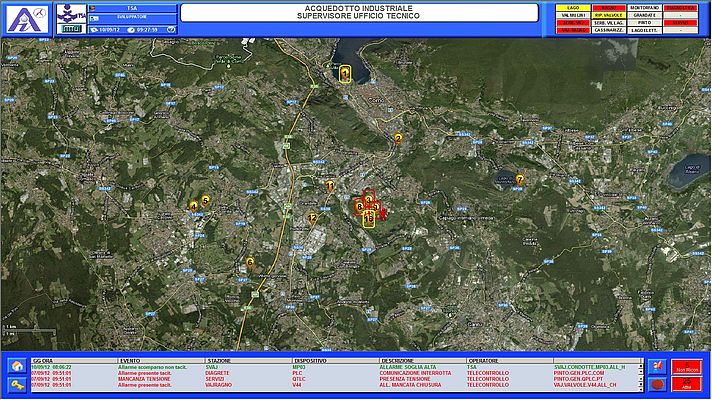Lake Como, in northern Italy, is served by nearly 40 miles (60 KM) of aqueducts. The aqueduct draws its water directly from the lake and pumps it to storage tanks. The water flows from the tanks via aqueducts serving businesses around the lake. The waterworks reliability is paramount as water disruption leads to lost production for manufacturers of Como. After 30 years of service, the SCADA system was in need of modernization. Energy costs in the region have risen significantly during the last 30 years. The geography of the lake set in mountainous terrain, is particularly challenging to water management. The modernization of the SCADA created the opportunity to not only take advantage of technology advances, but also to review concepts of water management and to introduce the concept of Energy Profile Management.
Pumping is the greatest percentage of energy consumed. Energy profile management involves analyzing daily consumption and comparing to lake levels which allows projection of storage required. The set-points for the pumps are managed such that the tanks are filled at night when electricity is less expensive. Operating the pumps during the day is possible, but minimized to reduce costs. The SCADA collects other relevant operational data of the system including continuous recording of pressure, level, flow rates and volumetric meter readings. In the future, further optimization of energy costs may be possible. Telecommunications was evaluated in the early phases of the project. The decision was made to move to an Ethernet based network. Existing telephone land-lines interconnect the PLCs and the SCADA host. HDSL provides the Ethernet network over the telephone system. The Ethernet-based network provides multiple advantages to a field bus architecture including the potential for future revenue sources. For example, other Lake Como utilities may lease bandwidth for their own industrial protocols or other applications such as surveillance and telephony may be hosted. The design also made the telecommunications independent of PLC and SCADA vendors for the project.
Two critical aspects of the communication reliability had to be addressed were network security and availability. Standard IT practices for security are used. Firewalls and VPNs ensure that the appropriate policy is deployed, allowing only access to recognized users of the system. Secondly, cellular modems are connected to each PLC. In the case of a failure of the land-line network, system operators can reach the PLC directly using mobile devices. A client-server architecture was chosen for the SCADA. The simplified design is based on commercially available hardware with a modular open architecture for maintainability. PcVue, from ARC Informatique, was chosen for versatility and ease of maintenance. The graphics provides a very lean display, thanks to modern symbols for visualization and animation. The variables (tags) in PcVue, using a branching structure, minimize the number of screens to be developed. The client stations deployment is essentially automatic. Clients are enabled by simply sharing the project file. Any modification for the project can be made on the server and copied to the clients.
The system has about a thousand alarms, which are divided into priority levels. All of the alarms are stored and are available in both textual forms and with graphic animations. When alarms are raised, the SCADA uses contextual logic to determine the appropriate course of action. For high priority alarms, SMS text messages are sent to the operator based on the concept that the operator can connect to the network and acknowledge the alarm. If the operator does not respond within a designated time, the system will resend the SMS message until the alarm is acknowledged. Even the choice of the contractor was strategic. Only qualified system integrators capable of design and implementation of the entire system with full autonomy on the project were considered.
A critical aspect was coming on-line with minimal disruption. It was not easy to manually operate the system and only possible for short times during emergencies. To replace the SCADA, a total halt of the waterworks was required. Well organized and coordinated teams worked simultaneously on all sites, such that installation and commissioning was minimized. The selected system integrator, T.S.A., provided a careful analysis of the state of the art in existing similar systems. T.S.A, formed a partnership with Borghi, who had previously been responsible for the design and installation of new electrical switchgear and control. The synergy between the two partners (TSA-Borghi) allowed for a competitive proposal with a substantial savings in cost. More importantly, the team had all the necessary areas of expertise to be able to execute all stages from design to commissioning without depending on third party subcontractors.



























































